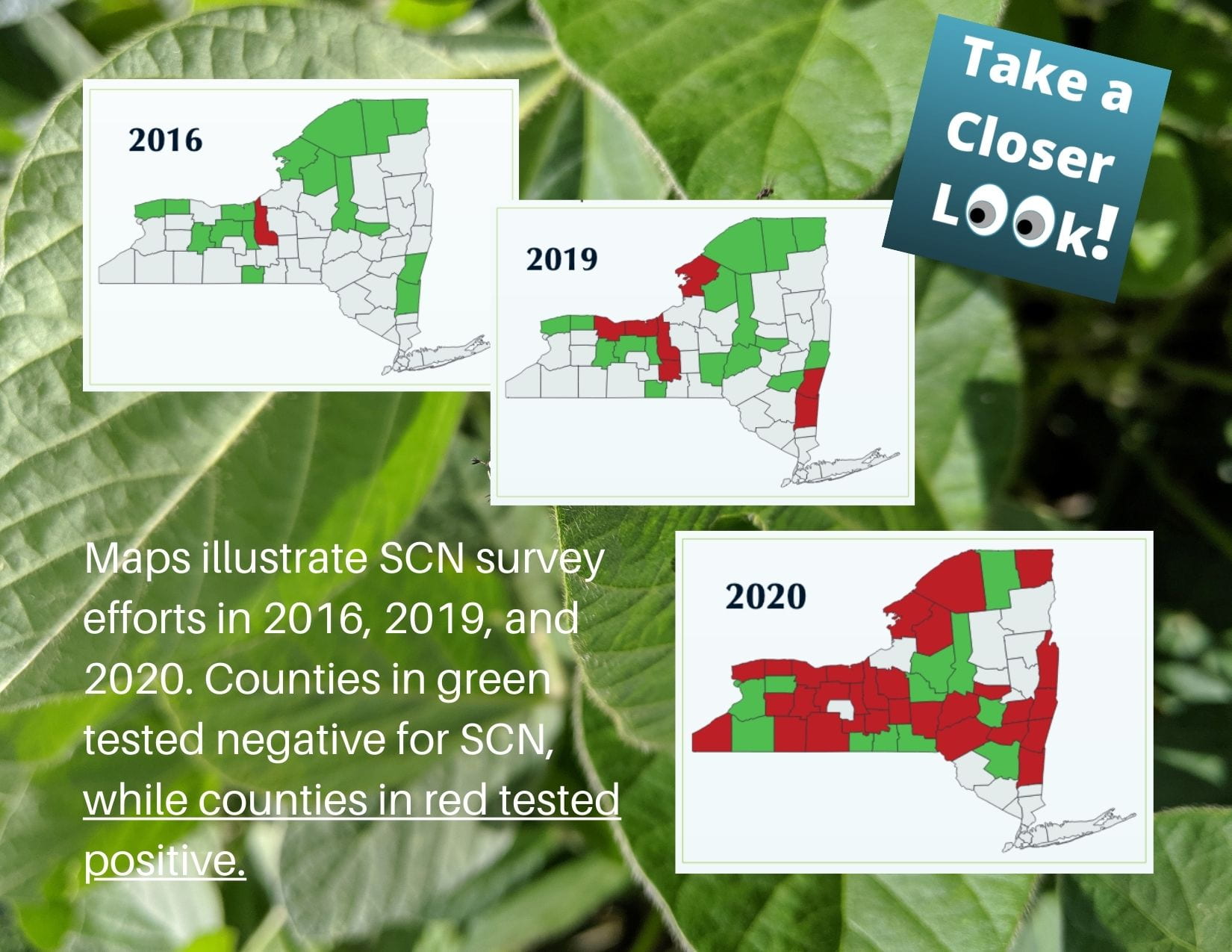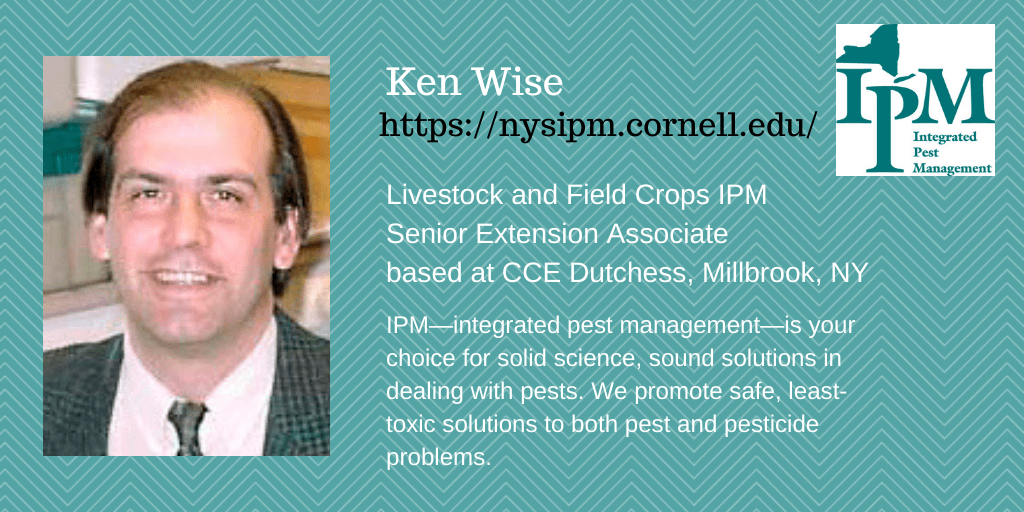The soybean cyst nematode (SCN) is the number one pest of soybeans nationally, potentially causing 10-30% yield losses in infested fields. In 2017, an estimated 109 million bushels were lost nationwide. SCN was first confirmed at low levels in Cayuga County, New York, in 2016. Since then, the NYSIPM program has led statewide survey efforts to identify the extent of infestations.
In 2019, our partnership with New York State Department of Agriculture and Markets, and the inclusion of SCN testing in a CAPS* survey revealed seven infested fields in six new counties—a huge cause for concern. This prompted the New York Corn and Soybean Growers Association to fund tests of 100 additional fields in 2020—tests that revealed an additional 23 positive counties. With 30 New York counties now facing SCN damage, the time for active management is here.
It’s not all soybean doom. Through training events and press releases, stakeholders learn how to stay ahead of this pest. Once growers and certified crop advisors understand the risks, and tools such as monitoring, they have appropriate and profitable IPM practices to combat crop losses. For low SCN populations, basic crop rotations and planting and rotating SCN-resistant varieties are more cost-effective than chemical options—good news in the face of this invasive pest. By instructing growers on how to manage soybean cyst nematode sustainably, we plan to prevent it from becoming the number one pest of New York’s soybeans.
Project Leaders: Jaime Cummings and Ken Wise Visit the Livestock and Field Crops Page of NYSIPM
Please address questions to Ken Wise


